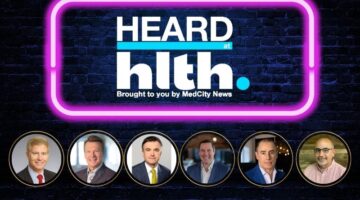On day one of the federal government’s Datapalooza (#healthdata) event in Washington, D.C., seven healthcare apps for consumers were demonstrated that all leverage different kinds of big data.
Castlight Health
Castlight Health literally wants to shed light on the healthcare shopping experience, which is essentially like a black hole. To bring a level of transparency into the system, Castlight Health promises that its mobile app can allow consumers to “know the cost and quality” of a healthcare facility or a doctor “before you go” and use their service. Consumers can search for specialists such as a dermatologist and know that they can expect to pay for instance between $47 and $440. A listing of doctors can also provide information about their hours, whether they are board certified and what kind of faculty positions they hold. There are also consumer reviews of the doctor.

Reducing Clinical and Staff Burnout with AI Automation
As technology advances, AI-powered tools will increasingly reduce the administrative burdens on healthcare providers.
The app can be made available to people either through their employers or insurance companies.
The company has recently raised $100 million in a series D funding round.
iBlueButton
The federal Blue Button initiative was launched to allow veterans to access their personal medical records by clicking a blue button from a website. And now the initiative is spreading to the private sector with several healthcare entities pledging to provide this capability to the general population.
Humetrix, a San Diego company, has come up with iBlueButton Apps for the consumer and the iBlueButton App for the physician to capitalize on this phenomenon.

Health Executives on Digital Transformation in Healthcare
Hear executives from Quantum Health, Surescripts, EY, Clinical Architecture and Personify Health share their views on digital transformation in healthcare.
The app enables data exchange with the patient at the point of care. Doctors can push data such as CT scans to their patients as well as visit summary. Essentially, it is a digital health information exchange platform that promotes easy access and interaction between patients and physicians. In fact, the apps for the physician and the provider can work on different form factors — the iPad and the iPhone — in real time and securely transfer data.
Flornce
Flornce is the virtual coach that can help patients, for instance cardiac recovery patients, manage the recovery process and help them adhere to the program that will make their recoveries faster.
Technically, it is not an app. It is a Web portal made by mHealthCoach and accessible from a PC or a smartphone. Patients can visit the portal to get answers to the 10 most common questions asked by cardiac recovery patients at the time of discharge and a list of primary care physicians, clinical trials taking place nearby as well as a search engine for looking up searches and conditions.
If a care provider, such as a nurse is also logged on, that person can also know whether the patient has been following the recovery protocol.
My Cancer Genome
Developed by the Vanderbilt-Ingram Cancer Center, My Cancer Genome is a public, online, personalized cancer medicine resource and decision-making tool for physicians, patients, caregivers and researchers.
Patients can search for clinical trials near their area based on their cancer gene as well as up-to-date information on what mutations make cancers grow. For clinicians, it matches tumor mutations to therapies.
MyDrugCosts
The goal of MyDrugCosts is to lower prescription costs for people. Annually, the U.S. spends $95 billion on drugs without any added benefits because people are not making informed choices. They are simply making the choices based on brand name and/or pharmacy.
MyDrugCosts can save hundreds of dollars by looking for alternatives. For example, a search for Lipitor shows generic brands that are available and potential costs savings.
ScanAvert
This app empowers consumers by alerting them to any allergen or harmful ingredient that is in any food item in the supermarket. All they need to do is download the app on their smartphone and then scan the bar code of any item.
The tool can also recommend substitutes when the chosen item appears to be incompatible with the person’s diet, pills or allergies. The app also provides recall notifications for foods that have been recalled.
ScanAvert is available on both Apple and Android platforms.
Symcat
Symcat essentially is an e-diagnosis tool that promises to be more accurate than a Google search. The mobile symptom checker is able to calculate symptom-disease frequencies from half a million patient records and is able to capture and present personalized health data in real time.
Instead of relying on inaccurate information that emerges from a brief description of symptoms on Google, which is what consumers are wont to do, Symcat uses sophisticated algorithms to create a ranking of the most likely medical condition for the symptoms entered. Symcat is short for symptom-based, computer-assisted triage.
While presenting at the Datapalooza, Symcat also won $100,000 from the Robert Wood Johnson Foundation. The foundation organized the Aligning Forces Developer Challenge that challenged developers to come up with solutions that “lift the overall quality of healthcare in targeted communities, reduce racial and ethnic disparities, and provide models for national reform.”








